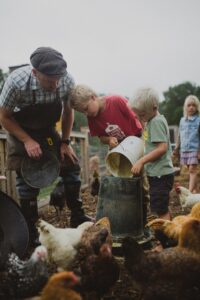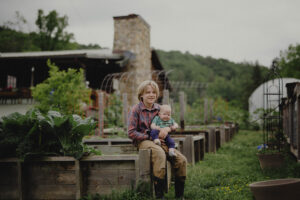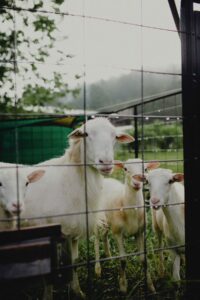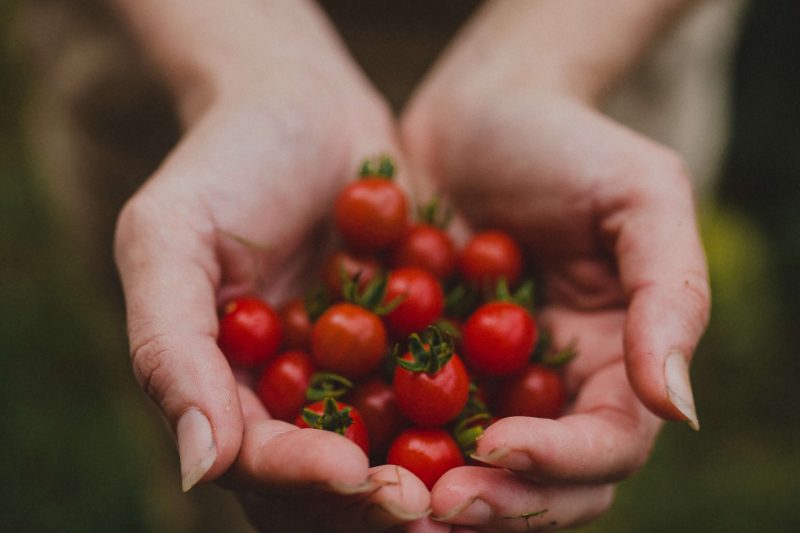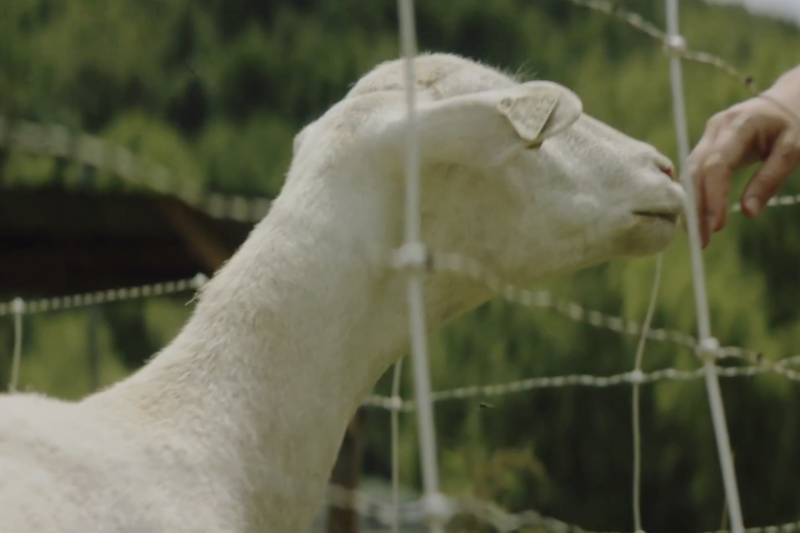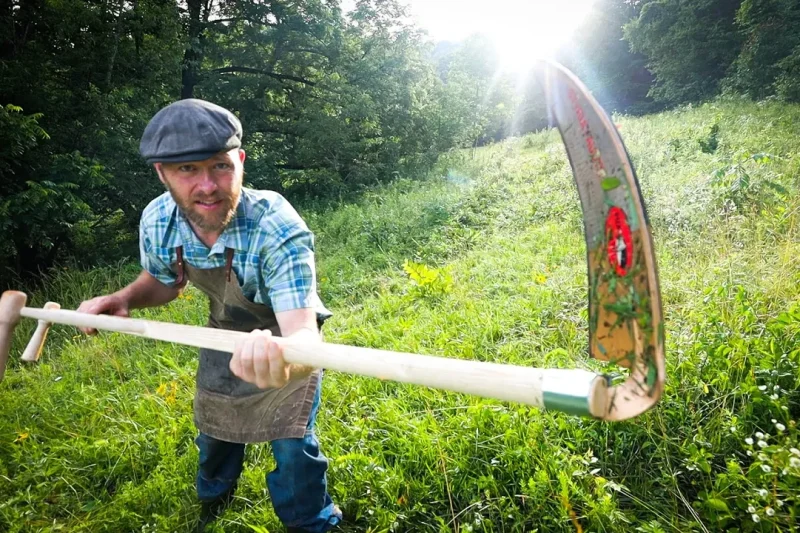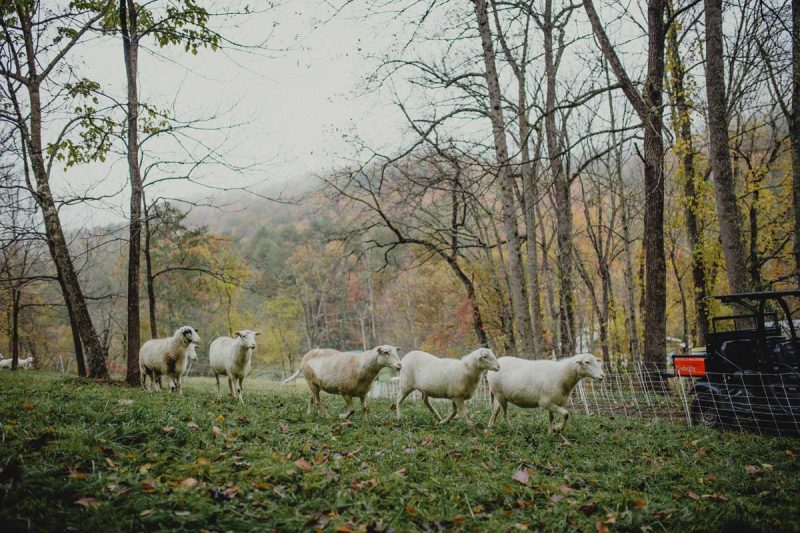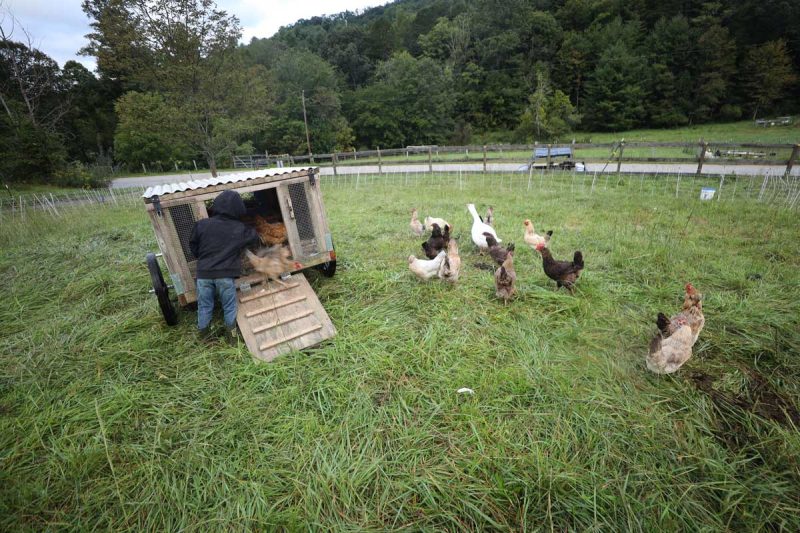
Abundance Plus
Raising your meat on the farm is very satisfying. When it came time to butcher our steer, I watched the butchering video I recorded for Abundance Plus with master meatsmith Brandon Sheard.
This video gave me the confidence to butcher on my own for the first time, and as I walked through the process, I felt empowered. You can access this butchering video when you sign up for a FREE seven-day trial of Abundance Plus.
Abundance Plus is full of how-to videos from me and many others sharing their knowledge as they learn in their homesteading journey.
Anyone who signs up for A+ will also get exclusive discounts to Premier1, New Country Organics (where we get our organic alfalfa feed pellets), McMurray Hatchery, Johnny’s Selected Seeds, Meadow Creature and many more.

Choosing How to Butcher
There are three main options for butchering a cow.
- Full-Service Butcher – You can take your cow, live to the butcher and have them do everything from slaughter and dressing to butchering. Some butchers offer a mobile slaughterhouse where they’ll come to you to slaughter the animal, then return it to the butcher shop.
- Butcher Share – You can slaughter and dress your cow on the farm and then take it to the butcher.
- DIY Butchering – Your third option is to do everything yourself.
Butchers often have a beef cuts chart, and you will choose what cuts of meat you want and how many pounds you wish per package. If you don’t know what kind of cut you need or want, do not be shy to ask your butcher to help you.
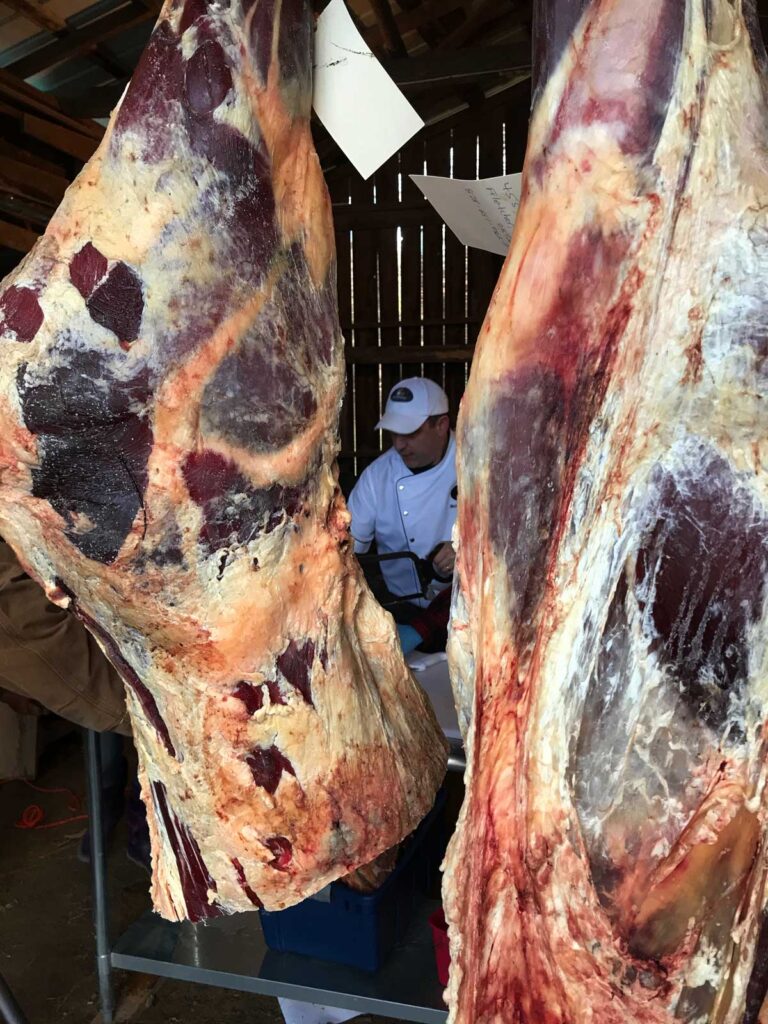
Choosing Your Butcher
Going to a butcher also allows you to use all the meat properly if you don’t know how to cut up your beef cow.
Choosing a good butcher is essential. They should have a good reputation and guarantee they will not mix your cow with other beef. You want to make sure they only give you your beef. Don’t be afraid to ask questions before using your butcher.
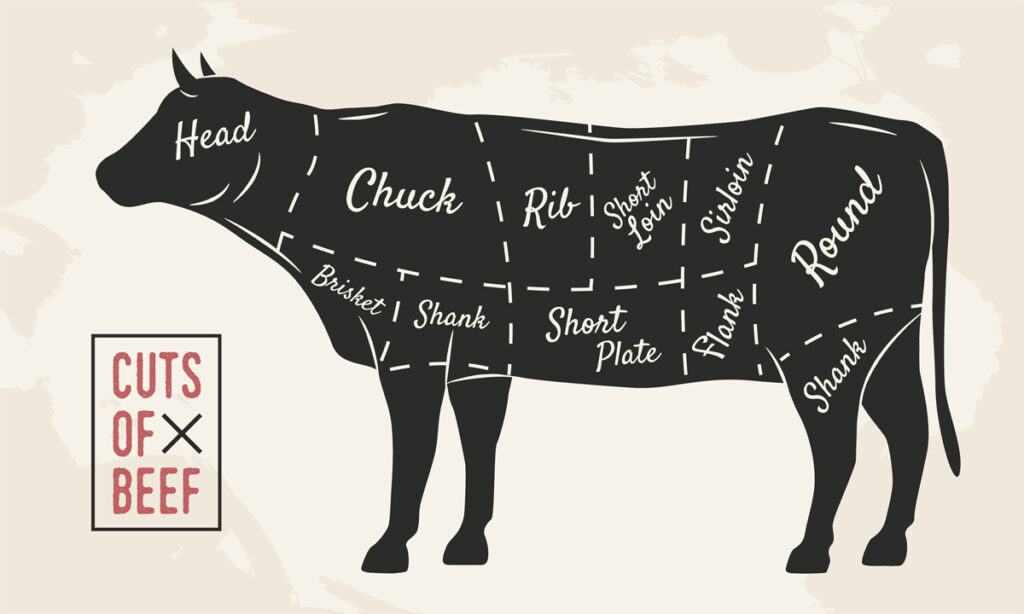
The Various Cuts of Beef
There are eight basic primal cuts of beef on a cow. All of the smaller packaged portions come from those eight cuts. Understanding the following list ensures that none of the meat will go to waste:
- Chuck – The chuck cut of meat is the cow’s front shoulder and neck region.
- Brisket – The Brisket is the breast of the cow.
- Rib – Only six ribs of a cow are considered rib cuts. The rest of the ribs are part of the chuck and plate cuts.
- Loin – This cut is directly behind the ribs and under the backbone.
- Round – Round cut meat is from the back of the hind legs.
- Plate – The plate cuts are under the belly of the cow.
- Flank – The flank cuts are below the lion cut.
- Shank – Shank cuts in the forearms of the legs above the knee caps to the shoulder of the cow.
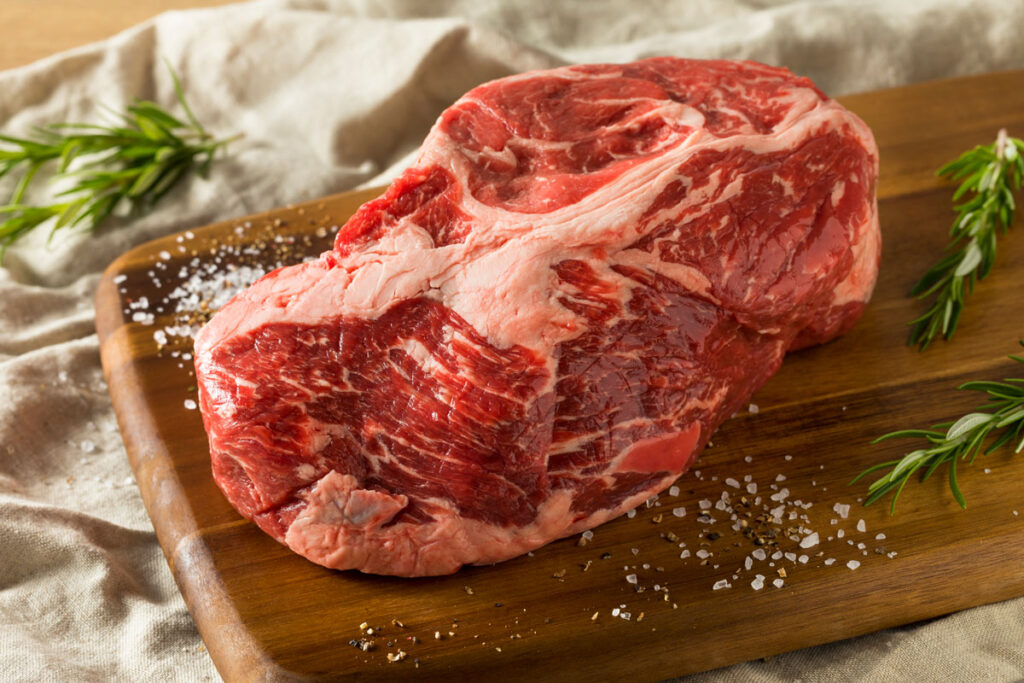
Chuck
The chuck cut on the cow is one of the cow’s most flavorful and economical portions. Chuck cuts of meat can be tough because there is a lot of connective tissue. So most of these cuts are best simmered in liquid.
Some popular portions of the chuck cuts are pot roast, shoulder steaks, flat iron steaks, and shoulder roasts. Chuck cuts are also suitable for grinding up to make ground beef.
Loin
Loin cuts are the most expensive cuts on your cow. This part of the cow is the most tender and juiciest part of the cow because the cow hardly uses this muscle for movement.
The loin cut produces your filet mignon, short loin, top sirloin, tri-tip roast, New York steak, t-bone steak and porterhouse steaks. Most people will say that this is the best portion of a beef cow.
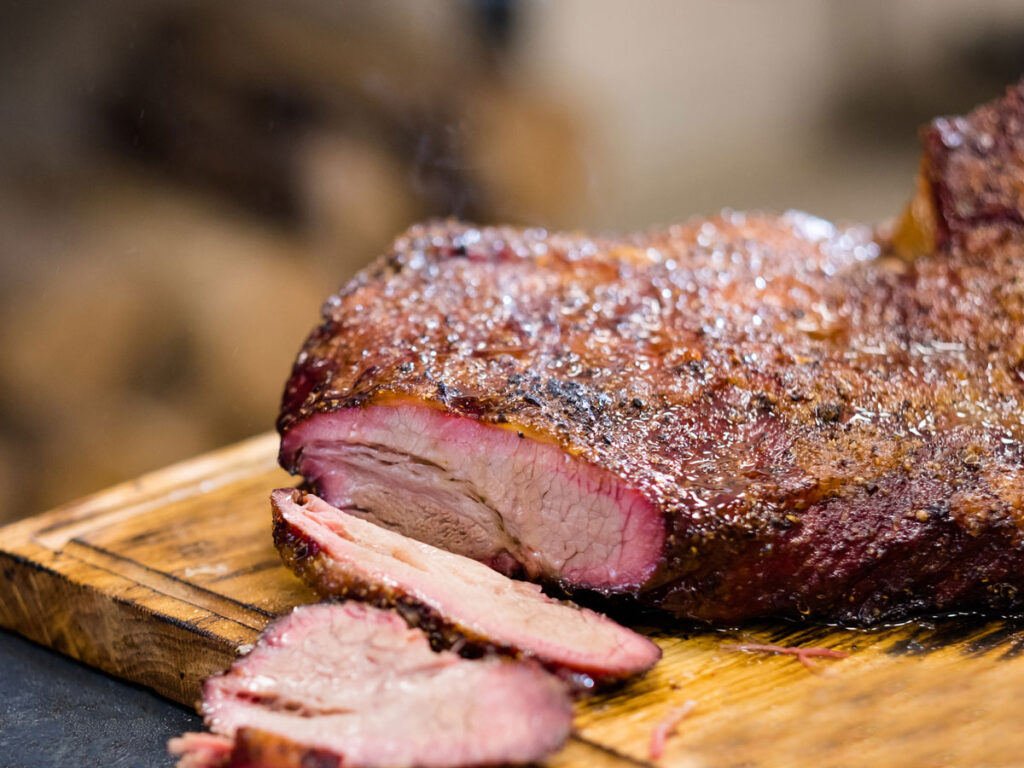
Brisket
There are only two portion cuts of meat from the brisket, the pointy or the flat brisket. Both of these cuts are best to prepare slowly because the meat is on the tougher side and can be chewy.
However, because of the high-fat content, brisket can also be delicious. The main uses of the brisket cut are corn beef and bbq brisket. Options for cooking these cuts are braising, smoking, or slow cooking.
Plate
This cut of meat is known to be fatty and has more connective tissue. Plate cuts of beef include short ribs, skirt steaks and hanger steaks. They are all very flavorful. Plate cut is also good to use for ground beef.
Flank
This primal cut has no bones because it is from the cow’s back belly. Flank cuts are very thin lean pieces of meat. This thin piece of meat is called flank steaks. A suitable cooking method for flank steak is grilling on high heat but don’t overcook, or it will be chewy.

Rib
Rib cuts are known to be tender and have fatty marbling. Cook these cuts on the grill or in a smoker. The only exception would be the rib roast (prime rib); cook it low and slow. Other known cuts of meat are short ribs, ribeye steak, and cowboy steaks.
Round
The round cut of meat is very lean and less expensive. This cut of beef is from the working hind muscles of your cow. It is divided into top round and bottom round.
There are different cooking methods for different portion cuts. Some cuts need slow cooking on low heat, while others require high heat. Known cuts of meat are the rump roast, round steaks, tip roast, and tip steaks. The round is also where roast beef is located.
Shanks
Shank cuts of beef are probably the toughest, leanest, and chewiest meat found on a cow. It is suitable for stews and soups and even better for ground beef.

Ground Beef
A good butcher will use all your beef. First, get all your steaks, roasts, ribs, and stew meat for the meals you want to prepare, then use the rest for ground beef.
Most butchers will have options for how much ground beef you want per package. Our butcher gives the options of 1lb, 1 1/2lb, and 2lb packaging.
Saving the Bones
Most butchers will also allow you to keep the bones. Bones are high in marrow and gelatin, which are great for making bone broth. Most butchers will package these bones for you upon request.
Offal
Offal is the animal’s heart, kidney, liver and tongue and is often discarded. However, I recommend harvesting and using as much of the animal as possible. There are ways to incorporate the offal so that it is more palatable.
In the past, we have asked our butcher to grind the liver into our ground beef. If you fear the taste or texture may be difficult to get used to, you can start by asking for half of the liver to be incorporated and work up from there as your tastes adjust.



